
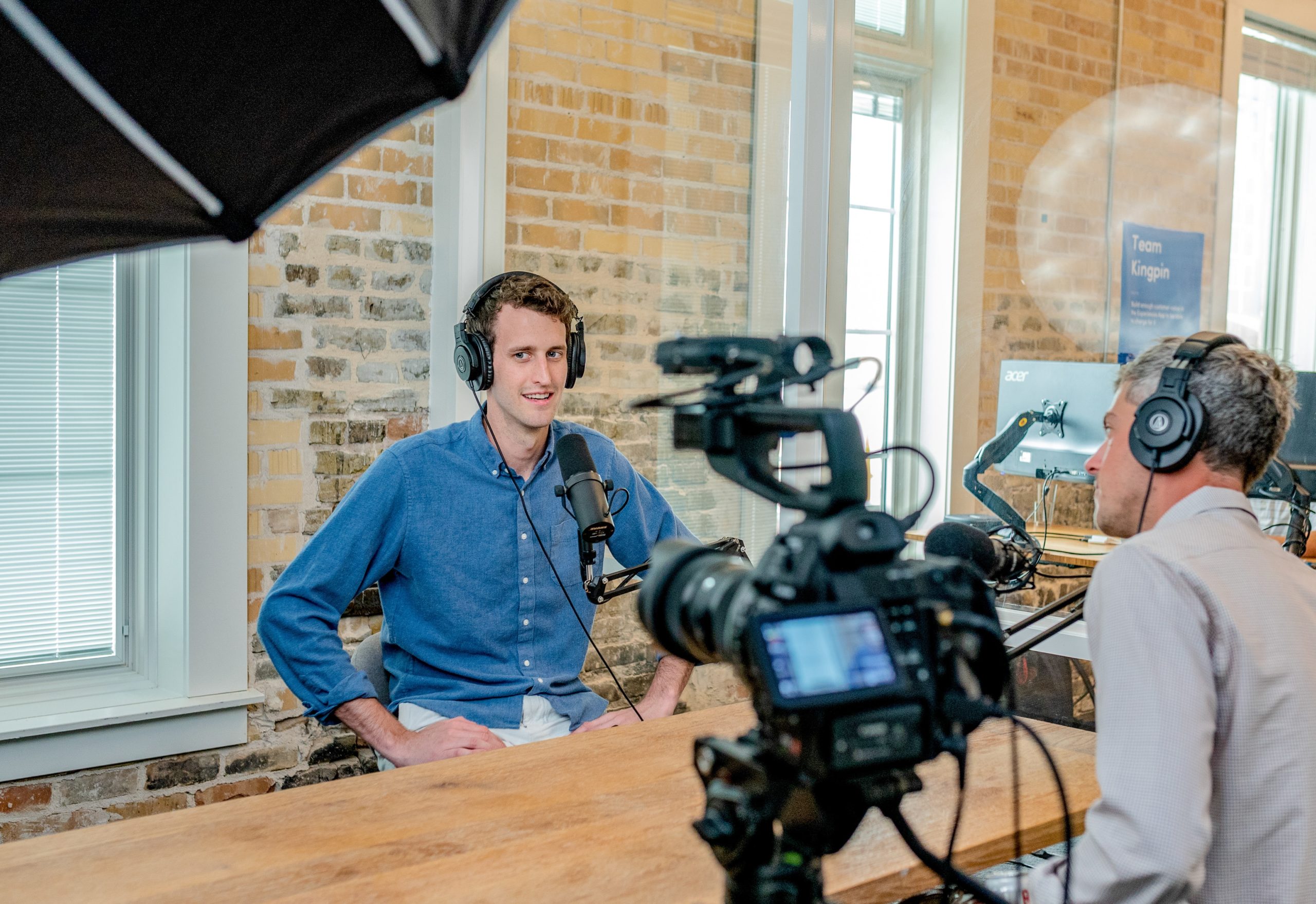
Quick Links
Quick Links
By 2021, the podcast industry is on pace to make $1 billion.
Who wouldn’t want to get in on that?
While starting a podcast is really easy on the surface, starting a podcast that actually gets listeners and brings in money is a completely different story.
If you’re hoping to start a podcast that does both of those things, you’ve come to the right place.
In this article, we’ll show you what starting a podcast entails with the exact steps to take to get from idea to launch. A notebook or a whiteboard can be super useful, so go grab that then come back and read on!
What is a Podcast?
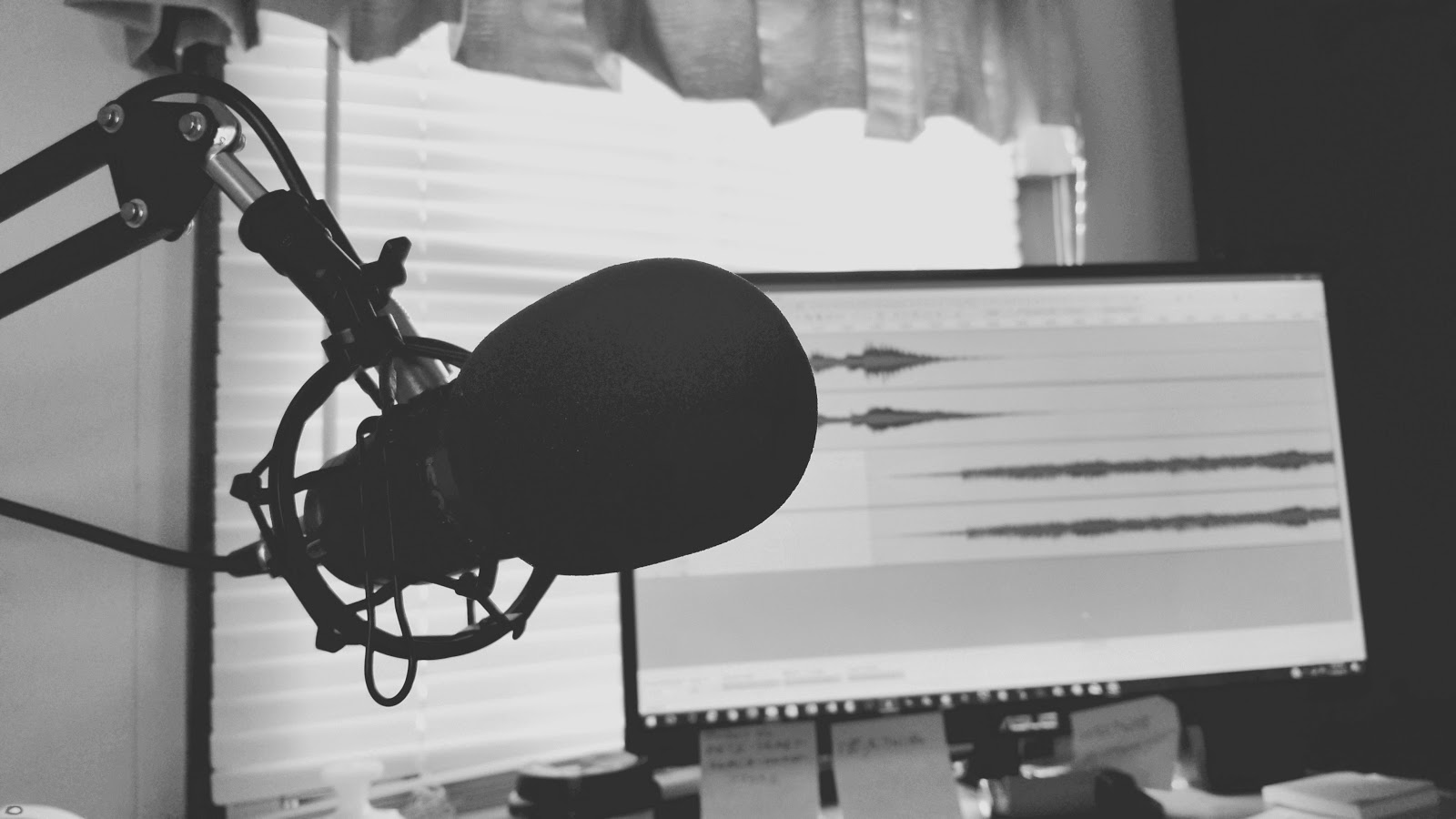
A podcast is an audio program much like radio, but not broadcast over the airwaves. You subscribe to it if you want to listen and get access to the episodes.
Most podcasts go live at the same time every day, week or month, but you can also replay episodes. They can be played whenever you want, as long as they are still available from the host. Many podcasts are audio only, but some video podcasts exist.
Podcasts are themed, so you will hear topics around the same general subject area on a podcast. They are also sometimes organized into one podcast series to group episodes more logically.
Most importantly, podcast shows are usually 100% original content. They can range from a few minutes to a few hours and be solo shows, co-hosted, interview style, or multi-person conversations.
How to Start A Podcast Your Listeners Will Love
Before you get into writing and recording your podcast episodes, take the time to plan your podcast by going through the following steps.
Pick The Perfect Format
There are three main formats for podcast episodes. You don’t have to stick to just one for your whole show, but you should choose one that’s going to be your go-to. Starting a podcast has a lot to do with your personal choice, and who will be involved. Choosing your format should follow that.
The Solo Show (Monologue)
PROS: Starting a podcast on your own is the fastest since you don’t need anyone else to record and air episodes. It’s also a great option for building a reputation as the authority on your chosen subject. Your podcast will also, then, be exclusively yours. This means that you can decide everything from episode topics and voice to sponsorship and monetization. And the profits are yours alone.
CONS: A solo show can be intimidating for a beginner podcaster, however. If you’re not used to talking into a mic, you might struggle with the sound of your own voice and feeling that you’re talking to yourself.
The Co-Hosted Show
PROS: Recording with a friend or colleague can be a lot more comfortable than recording alone. It also sounds more comfortable to listeners since it comes across as a friendly chat.
CONS: Finding a co-host can be challenging, though. You need someone that you have rapport and chemistry with so that the conversations flows and the audience will stay entertained. The best co-host is someone you can bounce ideas off of, debate with, and joke around with.
If you choose this option, make sure that you agree on recording dates and times, and how to share everything from podcast ownership and profits to the work involved in producing each episode. Consider as well how this will go long-term – not everyone will be available or willing to do the show with you for decades to come.
The Interview Show
PROS: Interview podcasts are very popular because they bring in outside expertise and entertainment from other sources. They also help to bring in new listeners from the audiences of your guests. Interviews are also great assets to you as the podcaster. They allow you to pick the brains of people that you’ve always wanted to meet.
CONS: Starting a podcast by doing interviews takes more work than the above two options. First of all, interviewing is a skill that you’ll need to develop. Start in more comfortable circles and grow into landing A-listers. Secondly, you will need to spend a lot of time searching for and reaching out to potential guests and scheduling interviews.
Additional Formats
Aside from the three most popular formats above, you can use any of the following interview-like formats if you think they will suit you and your audience better:
Roundtable – a number of guests gathered to talk through a specific topic
Documentary – narrated multiple interviews, conversations, on-location clips, etc.
Docu-Drama – a drama with documentary characteristics
Design Eye Catching Cover Art
A picture is worth a thousand words, and a picture with words is even better. You need to create cover art for your podcast that’s attractive and shareable so that you can build a great audience faster.
First impressions are everything, so your cover art needs to stand out from the lineup and speak to a specific, ideal listener. If you don’t know who your ideal listener is, then you need to think through who your targets are first, and create an avatar. If you don’t know what speaks to this avatar, you need to do some research in Facebook groups or wherever they hang out and get a feel for what they like.
You can design your own artwork based on your ideal listeners’ feedback, or have it custom designed by a friend, an artwork service, or a freelance designer. A few guidelines to adhere to:
- 1400 x 1400 pixels
- JPG or PNG format
- Under 500kb in size
- Use clear details and avoid cluttering (for easy 200px thumbnail viewing)
Check out the Buzzsprout article about designing cover art for more tips.
Plan Your Episodes
Episode formats are also important, especially when starting a podcast. You need to put them together nicely to attract your ideal audience and take them through the content smoothly.
Create Your Episode Segments
You’ll need to create the following segments to frame your episode content:
- A Teaser – Write out a nice headline-type sentence that entices the audience to listen to the podcast. A good way to do this is to tell them the result they’ll get from listening, and answer the main objections they might have to spending their time on the episode.
- Intro Music – Choose a bit of instrumental music – just long enough to cover your opening words plus a 2- or 3-second buffer on each end – for your podcast. Choose music that reflects your brand and messaging. This serves to prepare the readers by putting them in the right state to absorb your content. You can purchase music to use from a number of podcast music sites, or you can download free music clips from rights-free sites.
- A Welcome Message – You always want to welcome your audience to appreciate them for spending their time with you. Be upbeat when you welcome them to show how much you love having them.
- An Ad Spot – This is optional, but it will help you generate some additional income from your episodes. If you have a guest, you could have this as an affiliate segment.
- A Call To Action – It’s vital to always mention an action that you want your listeners to take, even if it’s just to subscribe to your YouTube channel, for example. You want to lead them closer to the ultimate goal that you have for your podcast, which is usually to generate some revenue.
- Outro Music – Choose another bit of instrumental music that serves to close out the episode in a smooth and familiar manner.
Create a Schedule
When starting a podcast, you don’t want to commit to releasing more episodes than you can keep up with. You will want to be consistent, so figure out what you can realistically produce. Consider what style you’re going with, too, and what time commitment that requires.
Choose the most frequent schedule that you can stick to. More often is better, but regular is better – even if it’s monthly – than missing episodes or airing sporadically. People have routines, and you want them to make your podcast part of their routines. When you have a schedule, they can plan their lives to include your episodes in their schedules to make a more powerful impact.
Some people can’t commit to doing even just one podcast a month, but have more time available during certain times of the year. If this is you, then you can choose a seasonal podcast. Starting a podcast in season format is a great option because it allows you to record a bunch of episodes when time allows, and release them over a pre-set period. The pressure is off to produce regularly, but you’ll still be publishing regular content that listeners can set their clocks by.
Write a Script
Scripting a show can be done loosely or word-for-word. Most podcasters choose to do loose episodes because it takes a very long time to write out every episode and more time to edit and produce them. You will also have to practice a lot to make sure that you don’t sound like you’re reading a script.
Loosely scripted episodes have a more conversational feel. People like podcasts mostly because they’re a more comfortable way of getting information. This tends to be the best option all around because it takes less time to prepare and sounds a lot better. You just prepare show notes – which you will need to do anyway – and talk from these points naturally. Here’s how to create a loose script:
- Bullet point what you want to talk about in your episode. These bullet points will also serve as your show notes once you add the timestamps after the episode is recorded and uploaded.
- Think through each bullet point and what you will say. Add sections under the ones that cover broader topics to break them down — this helps you remember what you want to say as you go down the list during the recording.
- Practice talking freely about the bulleted items so you are ready to record an entire episode without sounding like you don’t know what you’re talking about.
Aside from the core content, you want to develop a natural style of opening and closing your episodes. This is different from your intro and outro, and should not be recorded. Still, you want to develop a signature opening and closing that people will remember you by.
Here are a few podcast writing tools that can help.
Pick a Topic and Name
Your podcast topic and name must resonate with your target audience. The kind of topic that works well for podcasts is the one that makes your client avatar say, “He/She read my mind! This podcast is for me!”
The first thing you need to figure out for this step is why you are starting a podcast. Then you need to get really clear on who you are and who your message is for.
For example, you may want to build your reputation as an influencer in the marketing sphere by providing valuable advice to small business owners. Your why for your podcast may be a freelancer who wants to attract bigger projects by providing information in your niche that shows your expertise. You might even just want to podcast as a hobby or just to provide free information for people to help them improve their lives.
Once you’ve got that, you can choose a topic and name that speak to that audience, letting them know exactly what you’ll provide. For example, a freelance designer appealing to millennial business owners might choose as a podcast topic and name:
- Social media cover art – Cover by Design / You’re Covered!
- Business card design – Get Carded
- WordPress website design – Press the Market
As in the examples above, you want a topic that is specific so you can attract a loyal niche audience. Make sure that you can talk about it for hours on end, though – you will be creating a ton of content around this niche! Don’t worry if you start with a really small niche – you can always expand as your audience grows and demands additional content.
Your name should above all be broader than the niche topic you chose – this makes it easier to expand later on. It should still be related, though, and describe what you talk about on the show.
Note: You can use your name if you’re building your personal brand, but it should be clear what your main topic is if you’re not already a well-known persona. Using a descriptive title also helps your podcast be more searchable when people who don’t already know you are looking for content around your topic.
The key is to choose a clever name that’s also clear – a combination between memorable and descriptive is the sweet spot. Don’t make it too long, though, because it will become awkward.
Pick Winning Episode Titles
Following the same advice as above, you want episode titles that are catchy yet tell the listeners exactly what to expect. You want to attract them but also let them know upfront what they’re going to get out of the episode.
Following the design examples above, these would make attractive episode titles for the following topics:
- Social media cover art – Facebook Covers that Convert
- Business card design – Cards that Call Out in the New Normal
- WordPress website design – Templates to Target Business Customers
Whatever you do, don’t just name them in sequence, like Episode 1 and Episode 2. Nobody will want to sort through a hundred episodes to find the one that they want to listen to.
Record and Edit Your Episodes
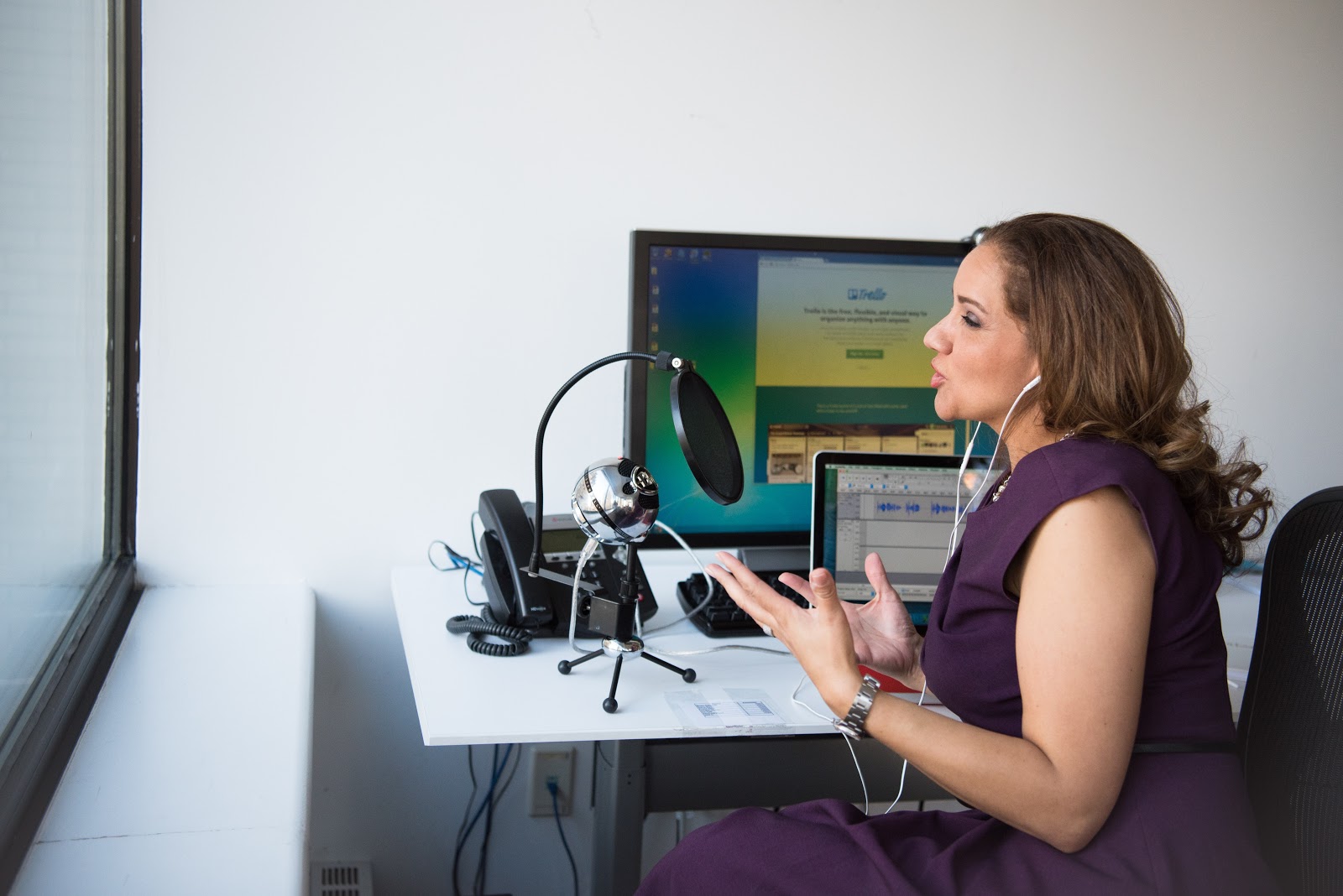
Now you’re ready to get into the really fun part of starting a podcast – recording and producing episodes!
Recording Equipment
You can record your podcast episodes with just your average laptop, as long as the mic works. Ther sound quality won’t be that great, though. The good news is that you can get a simple USB microphone setup that can give you quality sound without breaking the bank. These cheaper options are better to start with anyway, and you can upgrade later on, including a boom arm mic stand. If you’re doing in-person interviews or a co-hosted show, a mid-range lapel mic setup will be a lot better than a single laptop microphone.
Here’s a great resource on podcast equipment that you can go through to choose the options that best suit your needs and budget.
More important than the perfect mic to get started is practicing how to talk into a mic. Focus your time here instead so you don’t end up sounding strange on playback. A good way to start is to always bring your ideal listener to mind before you start, and pretend that you’re talking to them. Don’t bring the mic too close to your mouth, but don’t position it so far away that you have to shout to be heard. About 6 inches is a good distance.
Always warm up your voice before you start recording. You can use any warm-up exercise you like – there are a ton for free online. The point is to give your voice a good run through the ranges that you will normally use for speaking and loosen up your tongue so you can avoid stumbling over your words.
Recording Software
All you really need to start a podcast is a software tool that allows you to record, make cuts and rearrange clips, and export the file types that you need for upload to your host.
Below are a few popular recording tools that you can use for your episodes.
Audacity: Free, quality audio editing application that meets most podcasting needs.
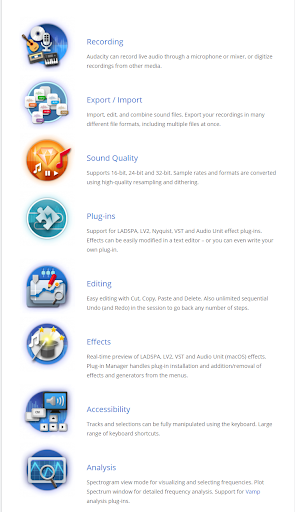
https://www.audacityteam.org/about/features/
Adobe Audition: Pro-level, feature-rich podcast production tool (steep learning curve).
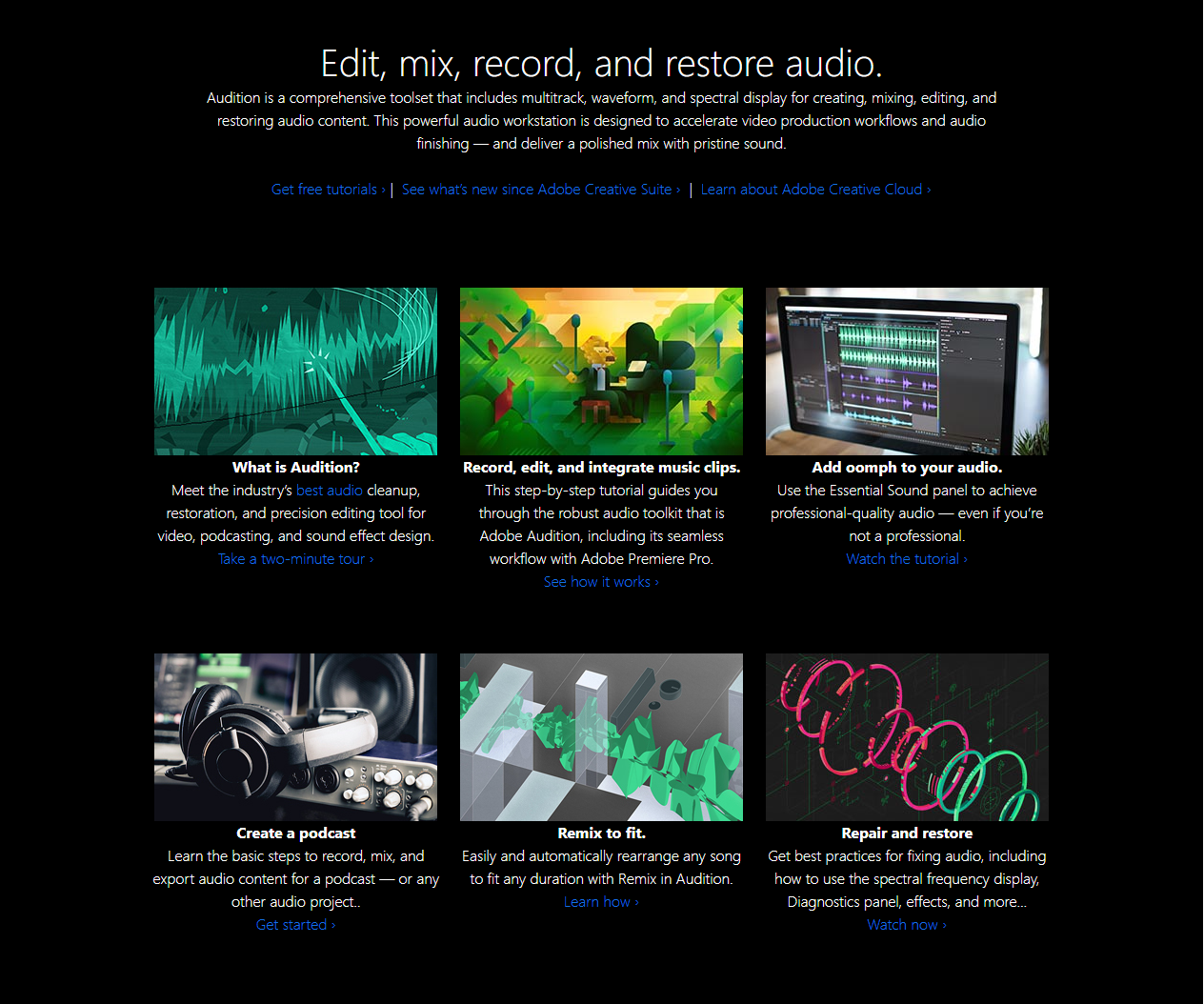
https://www.adobe.com/sea/products/audition.html
Alitu: The Podcast Maker: An easy web app option that automates audio cleanup, adding music, and publishing to your podcast host.
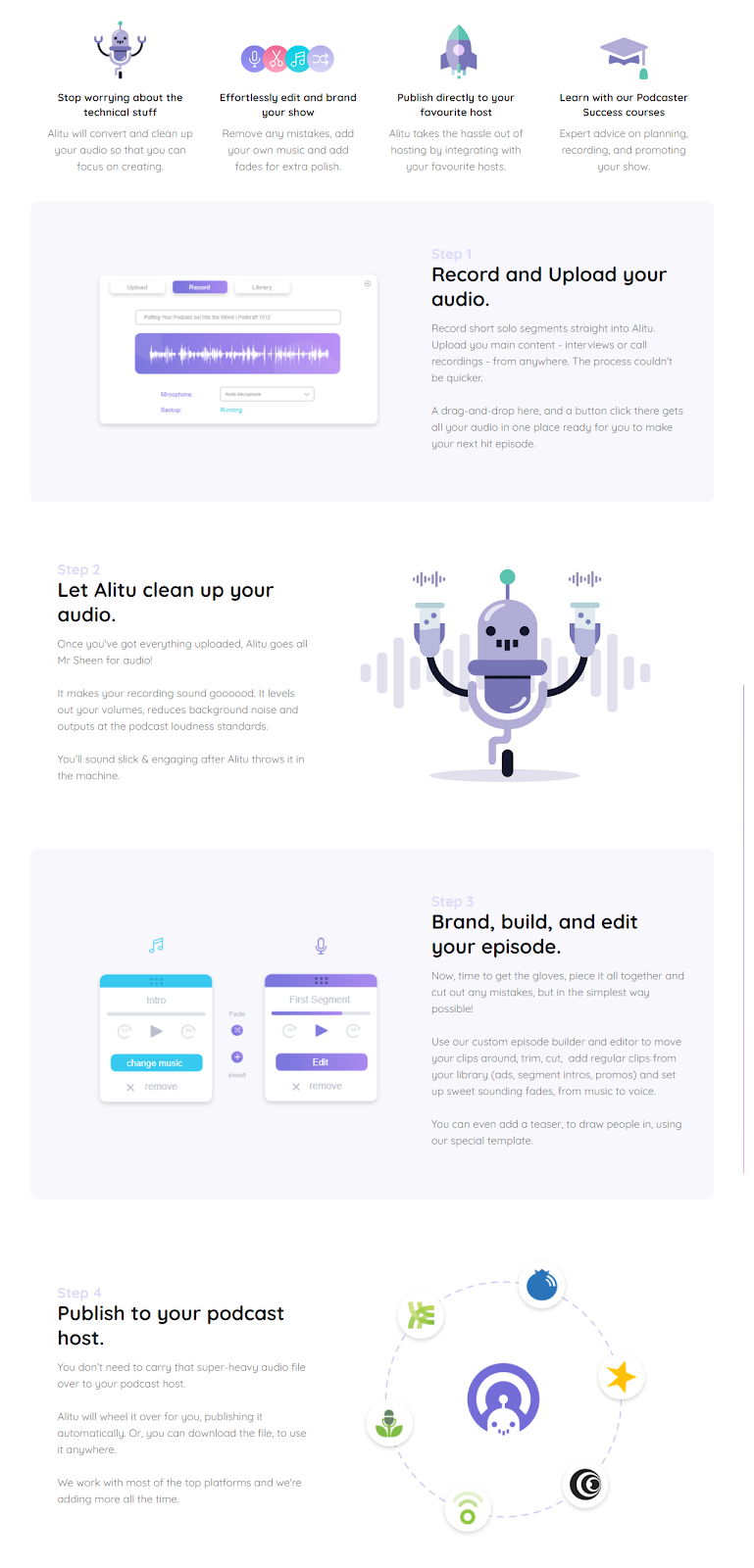
https://alitu.com/#howitworks
Where to Host Your Podcast
All your efforts in starting a podcast will all be for naught if you don’t have the right host that will make your episodes available to your target audience. You need a general media host or a specific podcast host. This is simply a place to store your audio and allow your followers to listen, download, and subscribe.
For example, if you have a blog, then you also have a website host, i.e. the place where your post content is uploaded, stored, and made available to readers. It’s the same for podcast episodes.
Choose Your Media Host
You basically have two options for hosting episodes: sign up with a media hosting service that is built for podcasts or set up your own website to host your episode files. (A hybrid option is to use both a podcast host and set up a website to deliver your episodes on more than one channel.)
Here are a few examples of popular podcast hosts:
Buzzsprout: a cheaper option ($12/month)

https://www.buzzsprout.com/features
Captivate: the best for multiple shows since it has growth features ($19/month)
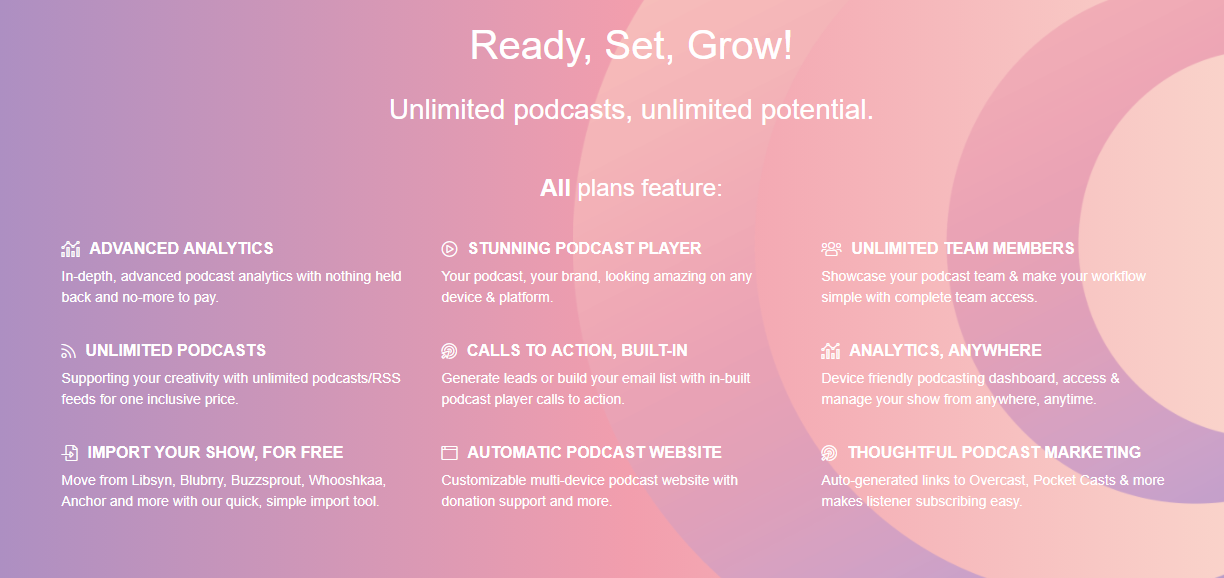
https://my.captivate.fm/signup
Transistor: the best option for private podcast feeds ($19/month)
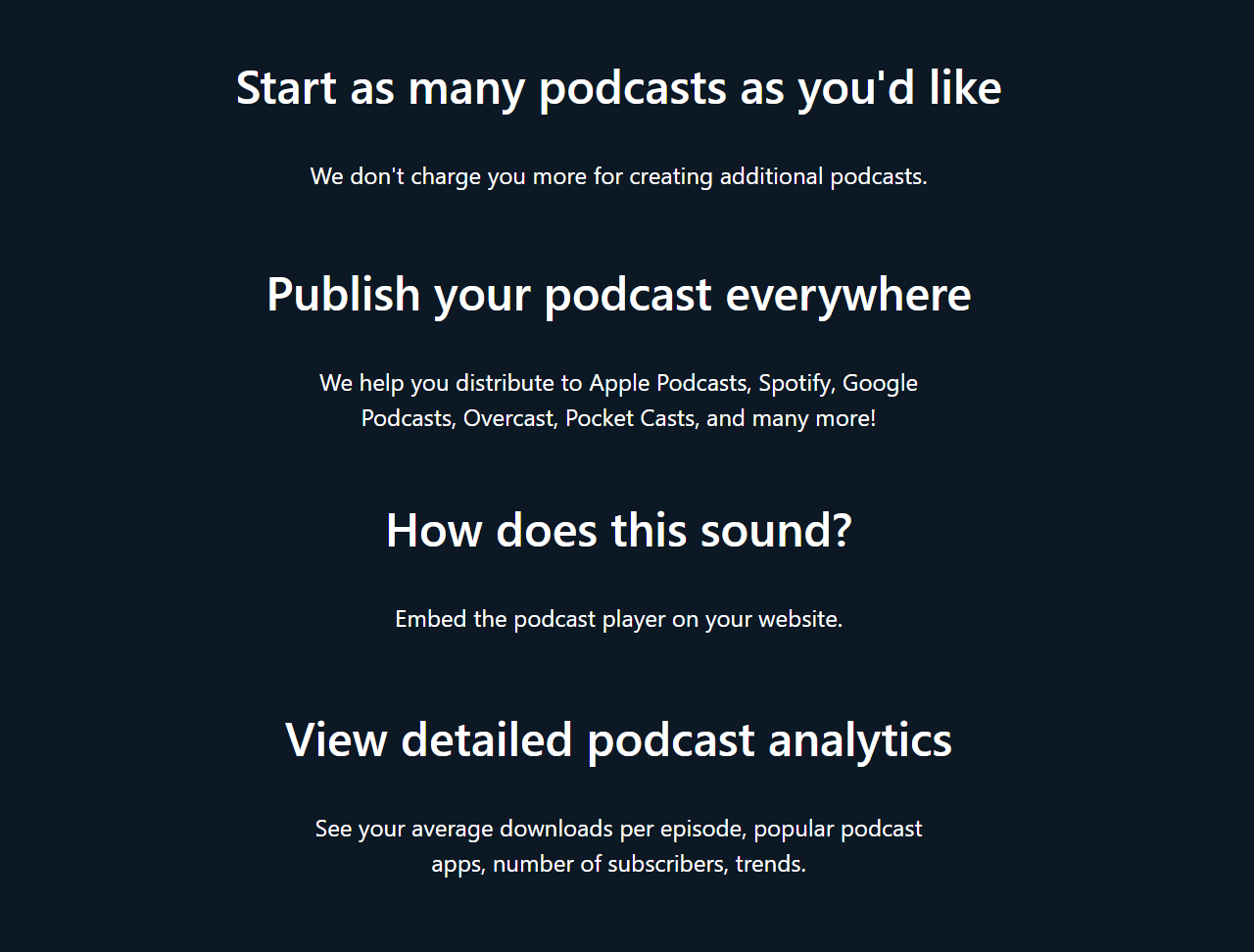
https://transistor.fm/features/host-multiple-podcasts-on-the-same-account/
Do some Google research to find the hosting solution that suits you best — it’s really all about what is most convenient for you. If you just want an easy place where people can subscribe, Buzzsprout is a great solution. If you’re good with website builds (or can hire a developer) and want to use the podcast to build your brand there, then you should self-host on a website.
How to Promote Your Podcast
Now we come to the most exciting yet technical part of starting a podcast. Publishing and promoting your podcast is a lot easier when you use a host that has seamless integrations with services that help you get your content out there. Most media hosts have these integrations.
Buzzsprout, for example, has a button that allows you to submit your podcast to iTunes, then get your RSS feed and submit that to other podcast directories. After that, your RSS feed gets updated automatically. You can also share on social media at the click of a button and generate teaser videos, too.
Marketing your Podcast
Whether you want to podcast full-time or do it as a side hustle, you should always consider properly marketing your podcast to make some money with it. This can be enough to cover your time and your costs, or it can be to generate additional income so you can support a cause you love or have it replace your current income stream.
When you are just starting a podcast, affiliate marketing is a great option. Other companies would love to have you recommend their products or services in exchange for a commission on each sale. You can hire a freelancer to do lead generation for you and reach out to potential partners.
When you have a sizable audience, contact companies to promote them through advertising and sponsorships. If your messaging resonates with them, they will pay you to plug their products or services.
Make sure that the content is valuable and in line with the content of your episodes, though, so you don’t annoy your audience.
Final Thoughts
Podcasting is a great way to accomplish a range of goals, including creative self-expression, business marketing, and building deeper connections with an audience. The conditions are perfect for starting a podcast. If you put the work in, stick to it, and commit to delivering great content, you’ll be in a great position to make an awesome impact.
If you’re looking for more information on how to grow your podcast once it’s launched, take a look at our helpful resource.
